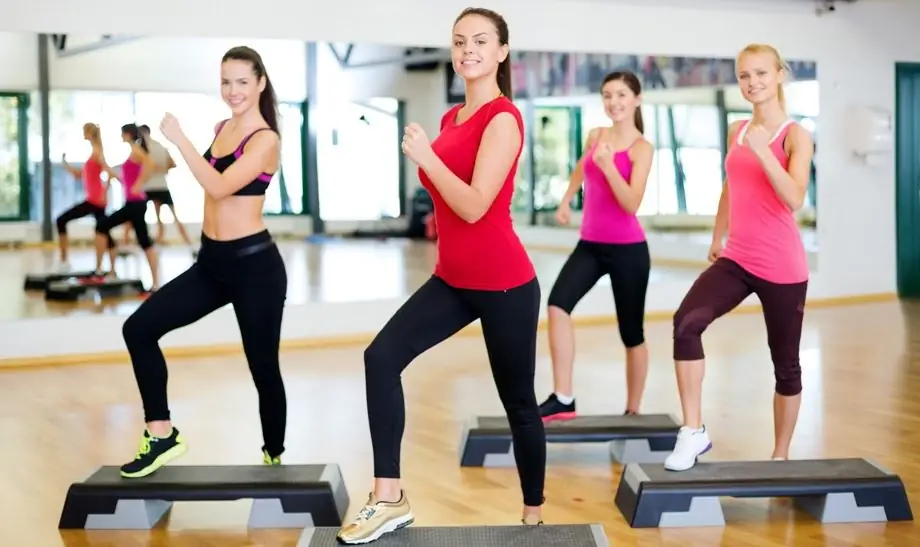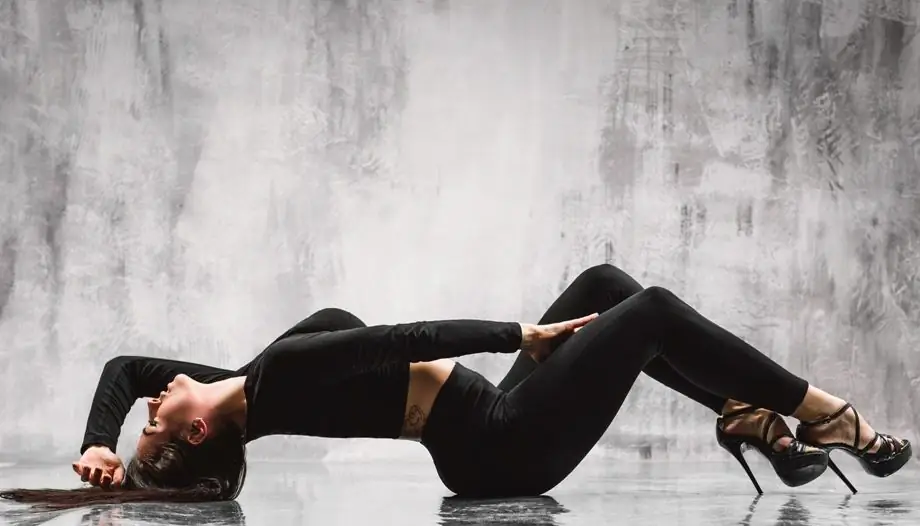- Author Rachel Wainwright [email protected].
- Public 2023-12-15 07:39.
- Last modified 2025-11-02 20:14.
Pilates
Pilates is one of the most popular systems for working with the human body and consciousness at the present time in the world, harmoniously combining Western and Eastern systems of exercises. It got its name in honor of the person who developed it - Joseph Pilates.

How was the Pilates system created?
Joseph Pilates grew up as a weak and sickly child. He suffered from rickets and bronchial asthma. But thanks to systematic sports, he managed not only to fully restore his health, but also to create for himself an amazingly beautiful body of an athlete. In addition, he managed to become a professional athlete and teacher of fitness courses with unique Pilates techniques and exercises. Joseph Pilates lived a long life and died at the age of 87. Shortly before his death, he admitted that his technique allowed him not to get sick, not to take any medications, that, despite his advanced age, he still enjoys success with women.
During the Second World War, Pilates was involved in the rehabilitation of wounded soldiers. It was then that he began to develop exercises for his own system. After the end of the war, Pilates, together with his wife, his own school, in which he taught people a unique method developed by him that provides imaginative, mental control over the work of skeletal muscles.
The Pilates technique quickly became popular all over the world. True, in each country, the followers somewhat modified it. For example, in Italy Pilates exercises are somewhat artistic and danceable, in England they prefer a conservative method, but in America they prefer strength and athletic forms of training.
Benefits of doing Pilates
Pilates exercises are performed in the static-dynamic muscle contraction mode, which is the most effective for strengthening them. During classes, almost all muscle groups are involved, including the small muscles of the legs and arms. This ensures the achievement of quick results, and most importantly contributes to the harmonious development of the human body.
Pilates lessons, first of all, should be taken by people suffering from diseases of the musculoskeletal system: arthritis, deforming osteoarthritis, osteochondrosis, posture disorders, intervertebral hernias, etc. Pilates exercises are also indicated for people suffering from chronic respiratory and cardiovascular diseases. In recent years, Pilates techniques for weight loss have been developed.
Contraindications to Pilates
Initially, the Pilates system was developed specifically as a rehabilitation system, therefore it has a small number of contraindications:
- Acute intoxication or infectious disease;
- Bleeding;
- Increased body temperature;
- Any diseases in acute form or exacerbation of chronic diseases, including cerebrovascular accident, coronary insufficiency, thrombosis, embolism, etc.;
- Malignant neoplasms and their metastases (before radical treatment);
- Foreign body close to large nerve trunks and blood vessels;
- Severe cardiovascular failure;
- Severe forms of mental illness, including mental retardation;
- Severe respiratory distress;
- Severe general weakness, increased fatigue, sharp pain;
- Atrioventricular block.
Pilates for beginners
People of both genders and all ages can start to practice Pilates. However, if you have any chronic medical conditions, it is best to start training under the guidance of an experienced instructor. When giving Pilates lessons, he must pay sufficient attention to the condition of his ward. With the development of tachycardia (over 100 beats per minute) or, on the contrary, bradycardia (less than 60 beats per minute), as well as with a deterioration in the general condition, the lesson should be stopped immediately.
The Pilates complex for beginner athletes necessarily includes exercises aimed at strengthening the muscles of the abdominal and back, which contribute to the formation of correct posture. When choosing Pilates exercises, it is important to take into account the individual characteristics of the person practicing this technique, which allows you to improve joint mobility, strengthen muscles and develop their plasticity.
If you do not have the opportunity to visit the gym and work out under the guidance of a trainer, you can use video pilates lessons.
Basic principles of Pilates
1. Concentration of attention aimed at controlling the correctness of the exercise;
2. Control of breathing. During training, preference is given to diaphragmatic breathing. Correct breathing greatly improves the effectiveness of Pilates lessons. Inhale should be done when returning to the original position, and exhale during the positive phase of the exercise.
3. The principle of centering, i.e. control of the balance between the left and right halves of the body, as well as between the muscles of the back and abdomen. Compliance with this principle prevents the occurrence of muscle pain and reduces the load on the spine.
4. Alignment. During any Pilates exercise, proper body position should be carefully monitored.
5. Coordination. Taking Pilates lessons, you get certain skills that you need to use in the future to more clearly perform each movement in the exercise.
6. Smoothness. All Pilates exercises are performed smoothly, without jerking, sudden stops or long pauses.
7. Relaxation. During classes, you should not strain muscle groups that are not involved in performing a specific exercise.
8. Gradualness. In Pilates, the increase in load occurs gradually, as the muscle endurance and general physical fitness of the athlete increase.
9. Consistency. In order to achieve a pronounced effect, you should practice Pilates regularly, at least two to three times a week. It is especially important to adhere to the principle of consistency if you are doing Pilates for weight loss.

Pilates at home
Not every person has time to visit fitness clubs, and some financial opportunities do not allow it. But doing Pilates at home is quite possible! To conduct classes you will need:
- DVD disc with video Pilates lessons;
- A small rug needed to do exercises on the floor;
- Small chair, hoop and ball.
And in conclusion, I would like to give some simple tips for those who decide to practice Pilates at home:
1. Clothes should not hinder your movements and be as comfortable as possible;
2. Practice barefoot or in thin socks, because this will allow you to more actively train the muscles of the feet;
3. Start exercising no earlier than an hour after eating;
4. If you notice a deterioration in well-being, then the exercise should be stopped immediately.
Found a mistake in the text? Select it and press Ctrl + Enter.






